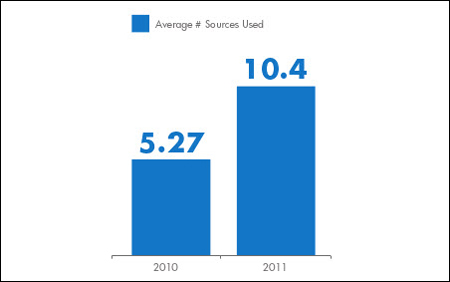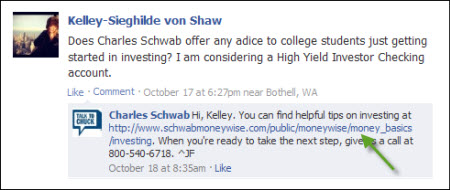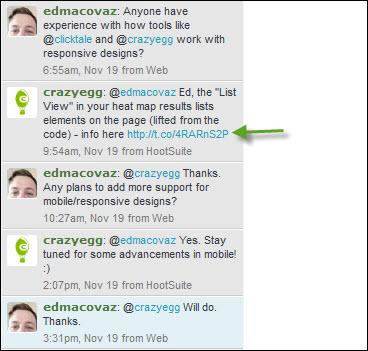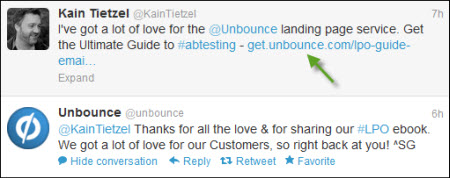In recent years, videos have been making inroads in digital marketing, emerging as a powerful promotional tool for businesses to promote their wares in an exciting and engaging way. Though when it comes to video marketing, there’s some pretty definitive ‘rules’ businesses should stick to in order to get their videos right. Get them wrong and marketing videos can be more hindering to a company than profiting.
Fortunately, if you’re a business looking to embark on an effective video marketing strategy, you’re in the right place, as Small Business Trends explores 25 tips for creating marketing videos.
Tips for Creating Marketing Videos
Tell a Story
Instead of being overtly salesy, an effective video tells a story. As the Digital Marketing Institute notes, businesses should utilize the emotive power of video by appealing to their customer’s needs and desires.
Make Sure the Introduction Stands Out
A little like how we are unlikely to click on an email if we’re not inspired by the subject line, an incredible one fifth of viewers click off a video within 10 seconds if they’re not interested in what they see. With this in mind, the introduction of the video is vitally important and should be made inspiring, entertaining and informative, to hook the viewer and encourage them to view the whole of the video.
Create a Stimulating Title
By the same token, your video’s title should be stimulating and eye-catching in order to grab a viewer’s attention. Furthermore, by using relevant keywords in a title, the video is likely to show up on the search engines when viewers search for the topic.
Focus on the Mission and Less on the Product
Instead of being overtly focused on the product and all its benefits, channel the message of the video into the mission of the product. Dove, for example, are hailed are being experts in creating emotional viral videos that focus less on their product and more on their mission.
Don’t Be Boring
Who wants to watch a boring video? It goes without saying, if you want your business’s video marketing campaign to be successful, create exciting and inspiring videos that can never be considered boring.
Get a Little Bit Risqué!
While too much naughty content is unlikely to do the credibility of your business many favors, as Inc. writes, just the right amount can be good for page views — as long as not overdone.
Make it Mobile Friendly
With more and more people using mobile devices to get online, it’s imperative corporate videos are mobile friendly. In fact, according to YouTube, mobile video consumption increases 100% every year! Marketing videos therefore need to be able to be downloaded and enjoyed on mobile devices.
Think About SEO
Quite simply, Google loves video content and an effective video marketing campaign should have Search Engine Optimization (SEO) in mind. To ensure maximum SEO value from your videos, accompany the video with a well-written description that is tagged with relevant keywords to help boost the video’s SEO.
Include Your URL in the Video
Displaying your website address in a marketing video is a good way for companies to get exposure and generate traffic to their website through a video.
Educate Your Audience
As the Digital Marketing Institute informs, one of the most powerful ways to implement effective video marketing is to educate viewers. Often videos that offer advice, information, tips and other informative content can be more effective than a solely promotional video.
Make the Video More Atmospheric with Music
Music is a powerful tool on video content, evoking a myriad of emotions. Don’t be afraid to use music in your video that fits the mood of the message and crafts a more exciting and emotive video.
Use Video Content Generated by Customers
Putting your customers behind the camera to talk about how they have used and benefited from your product, can be a powerful way to engage viewers and appeal to prospective customers.
Include a Call to Action
Similar to how all blog posts and content should have a call to action at the end, which invites the reader to take further action, such as signing up to a newsletter, or visiting a website, so too should a marketing video. Ask yourself, what do you want viewers to do when they’ve watched the video and then encourage them to do so without being overtly salesy.
Take Viewers Behind the Scenes
Consumers love to get up close to a brand and video marketing offers the perfect opportunity to take customers behind the scenes and into your business’s ‘natural surroundings.’
Include Tutorial Videos
Posting tutorials that are relevant to your niche is a great way to connect and engage with customers. Tutorials shouldn’t give away all your industry secrets, but should be enough to entice the viewer with informative and useful content, leaving them wanting to learn more.
Keep Them Short
Online viewers often don’t have much time to spare before they’re off looking on a new site and at a new video. In this sense, shorter marketing videos can tend to work better than long ones. As Helen Klein Ross told Kiss Metrics:
“The less you say, the more likely people are to remember.”
Use a Professional Voice
Words spoken with clarity and professionalism will always come out better in a corporate video than an amateur speaker, whose lack of experience speaking on the camera is obvious. With this in mind, it might be a good idea to have an employee that is experienced on speaking in front of the camera record for the video, or even think about calling in a professional.
Use Micro-Video Apps
Along with all this talk of keeping videos short for the viewer, it’s also true shorter content is a better format for most social platforms. As Forbes notes, short, concise content triumphs over longer forms of content, particularly on social media channels. Video marketers should consider using micro-video apps, which shorten videos to less than 10 seconds, so they’re ideal of sharing on the likes of Instagram and Twitter.
Pose Questions
Strive to create engagement and conversation with your video by asking viewers questions. Ask viewers to leave answers to the questions in a comment section below the video.
Don’t Be Preoccupied with Perfection
Videos for marketing purposes aren’t Hollywood movies and nobody expects perfection. Whilst you want the video to look professional, don’t become too obsessed with perfection that on the 50th take you still haven’t got in right.
But Don’t Forget Production Quality
That said, it’s important a marketing video is produced professionally. From the camera work to lighting, edited to voice overs, it might be a good idea to call upon the expertise of a professional video production company to ensure the video is produced in a high quality.
Use Videos to Help You Create Your Own Effective Video Marketing Strategy
Head to the likes of YouTube to see how businesses are already building videos that have managed to go viral. Featuring the likes of Coca-Cola, these ‘10 Epic Viral Marketing Videos’ on YouTube will give you some pointers on how some of the biggest and well-known brands are producing a video designed to go viral.
Build Hype Around the Launch of the Video
Instead of just going ahead and launching your video, build hype around the video by promoting its launch date on your website, blog and social media channels.
Provide Some Humor
Not all corporate videos need to be serious. On the contrary, some humour can work well in generating more interest in your video. Vidyard gives an example of a humorous marketing video that proved hugely successful — a parody by cloud invoicing provider Taulia of the award-winning commercial series ‘Get Rid of Cable’ by Direct TV. As Vidyard writes:
“The video not only delivers a laugh, but this kind of humorous take on B2B solution can really get your customers feeling connected with your brand and help you stand out in what can be a stuffy market.”
Embed a Video in Landing Pages
Think strategically about where you are going to place your marketing video. Statistics show that embedding videos in landing pages can raise conversion rates by as much as 80 percent.
With video forecast to claim more than 80 percent of all web traffic by 2019 and 90 percent of customers reporting that product videos help them make purchasing decisions, it is imperative companies create videos that resonate with their audience and ultimately help sell their services and products.
Culled from Small Biz Trends













